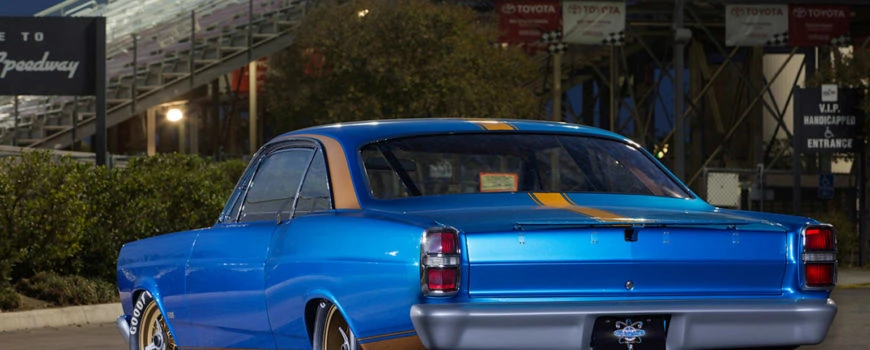Top 6 Facts about the Bullitt Mustang
In the annals of cinematic history, certain moments stand out as defining and unforgettable. One such instance is the exhilarating car chase scene in the movie “Bullitt,” featuring a Highland Green 1968 Ford Mustang GT 390 Fastback. This iconic film sequence not only redefined the portrayal of car chases on screen but also cemented the Mustang’s place in pop culture history. In this article, we delve into the details of the Mustang used in “Bullitt” and explore the lasting impact of this cinematic masterpiece.
FACT #1: The 1968 Ford Mustang GT 390 Fastback Was Very Desirable before Bullitt
Before the Mustang made its appearance in “Bullitt,” it was already a symbol of American muscle and style. Introduced in 1964, the Ford Mustang was an instant hit, capturing the essence of the era’s automotive desires. The 1968 model year brought about several design changes, giving the Mustang a more aggressive and distinctive look. The GT 390 Fastback variant, in particular, exuded power with its sleek lines and potent V8 engine.
The Highland Green color, chosen for the Mustang in the film, added a touch of mystique to the vehicle. This choice, combined with the car’s aggressive design, made it a perfect match for the gritty and intense atmosphere of “Bullitt.”
Fact #2> The Enigmatic Steve McQueen Was A Real Car Nut
At the heart of the “Bullitt” Mustang’s enduring legacy is the enigmatic Steve McQueen, who portrayed the film’s titular character, Frank Bullitt. McQueen’s passion for cars and racing was well-known, and it was his personal influence that pushed for the use of a Mustang in the film. McQueen’s involvement extended beyond his acting role; he was deeply involved in the selection and modification of the cars used in the movie, ensuring that they met his high standards.
Fact #3. The Chase Scene Is Still Rated as One of the best Car Chases Ever captured on Film
The pinnacle of “Bullitt” is undoubtedly the legendary car chase scene through the hilly streets of San Francisco. Lasting nearly ten minutes, this sequence set new standards for cinematic car chases and remains a benchmark for filmmakers even today. The raw energy and authenticity of the chase were a result of McQueen’s insistence on realism – he performed much of the driving himself, adding to the intensity of the scene.
The Mustang, driven by McQueen’s stunt double, tore through the city streets with screeching tires and roaring engines, navigating tight turns and breathtaking jumps. The scene was devoid of dramatic music or excessive special effects, letting the raw sounds of the engines and the adrenaline-filled driving speak for themselves.
Fact #4 : The Mustang Received Some Special Modifications:
In order to achieve the level of authenticity required for the car chase scene, the filmmakers meticulously prepared the Mustang and other vehicles involved. The suspensions were modified for better handling, heavy-duty shock absorbers were installed, and the engines were tuned to provide optimal performance. The iconic exhaust note of the Mustang added an auditory dimension to the chase, creating an auditory signature that enthusiasts would forever associate with the film.
Fact #5: The Movie Made The Mustang Even More Famous
“Bullitt” was released in 1968 and quickly became a cultural phenomenon. The combination of McQueen’s star power, the Mustang’s brute performance, and the groundbreaking chase scene catapulted the film into the realm of timeless classics. The Mustang GT 390 Fastback became synonymous with the film, and its Highland Green hue became instantly recognizable.
The car’s fame extended beyond the silver screen, and it remains one of the most sought-after classic cars to this day. Enthusiasts and collectors clamor for authentic replicas of the Bullitt Mustang, and the original car itself resurfaced in 2018 after being missing for decades, further cementing its legendary status.
Fact #6: Many Consider The Bullit Mustang to Be the Eptome of Muscle Cars.
The “Bullitt” Mustang captured the essence of American muscle cars – unapologetically powerful, exuding a raw charisma, and synonymous with a free-spirited attitude. This allure persists, drawing enthusiasts and car aficionados to the mystique of classic muscle cars. The combination of style, performance, and cultural significance embodied by the Mustang has inspired generations of car enthusiasts and continues to influence modern automotive design.
What Does it Mean To Audiences Today?
The Highland Green 1968 Ford Mustang GT 390 Fastback immortalized in “Bullitt” is more than just a car; it’s a symbol of speed, style, and the relentless pursuit of authenticity. The film’s iconic car chase scene redefined cinematic action sequences, emphasizing realism over spectacle and leaving an indelible mark on popular culture. The Mustang’s association with Steve McQueen’s legendary portrayal of Frank Bullitt has elevated it to a level of reverence that few vehicles ever achieve. As long as there are screens to watch and open roads to traverse, the roar of the Bullitt Mustang’s engine and the memory of that exhilarating chase will live on.
Considering the movie car sold for $3,4M, it’s clear that this car is a true icon. We especially love the wheels.

